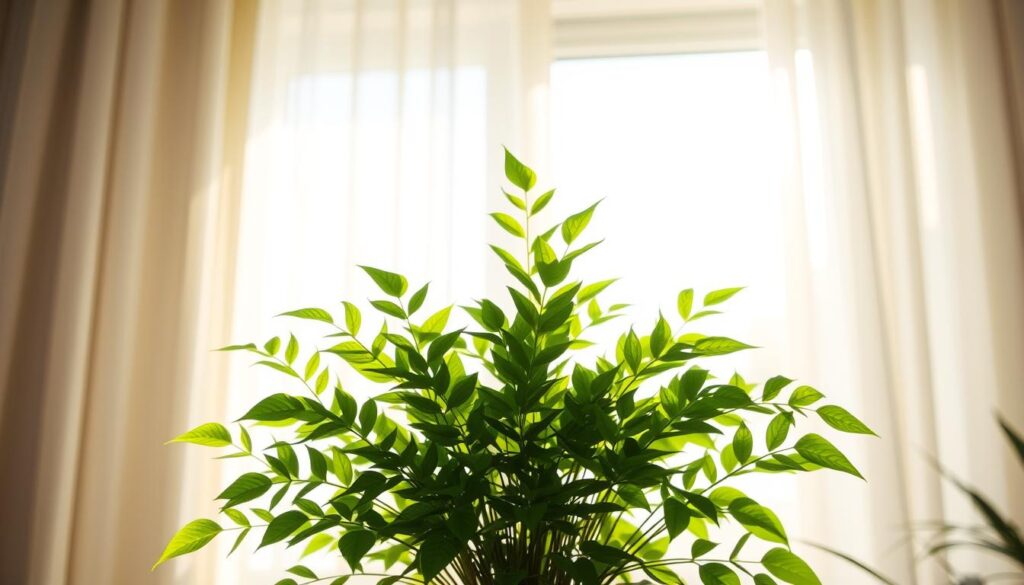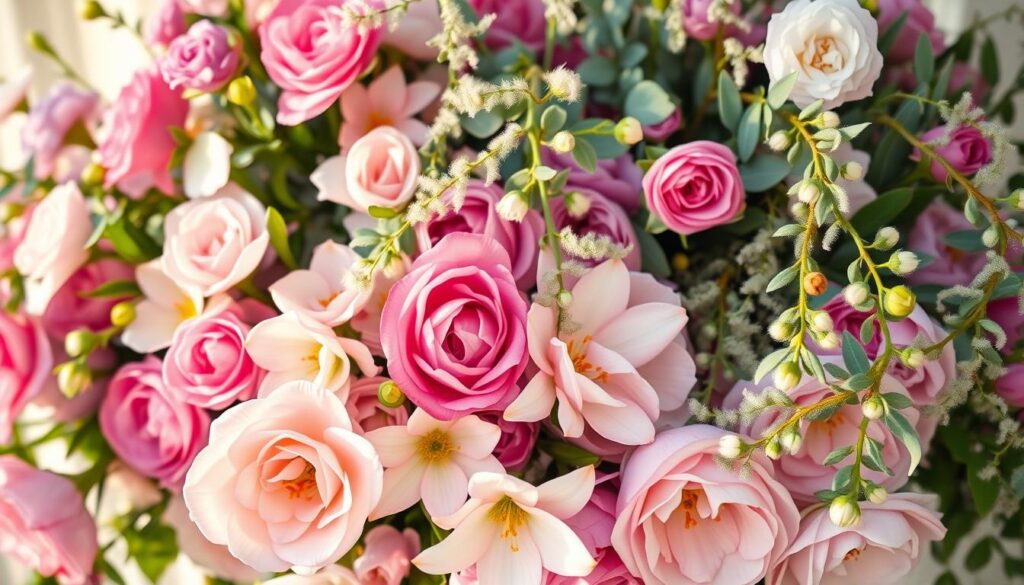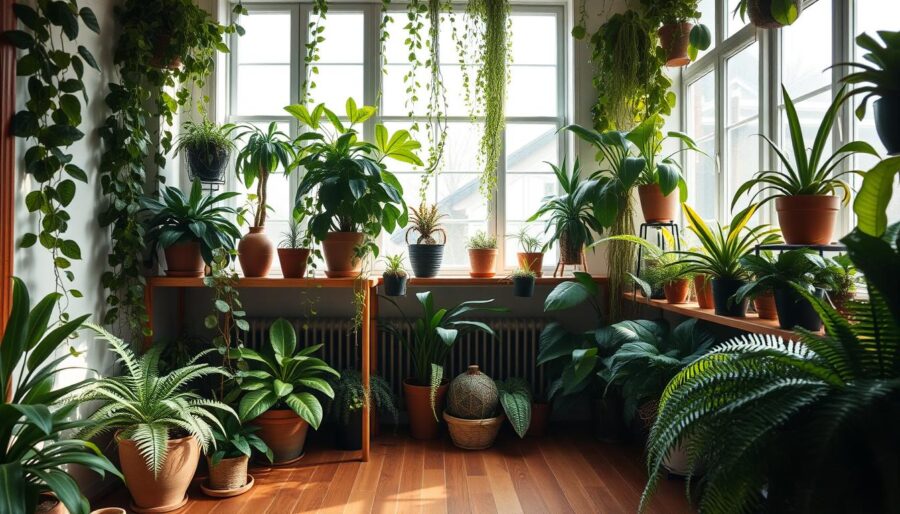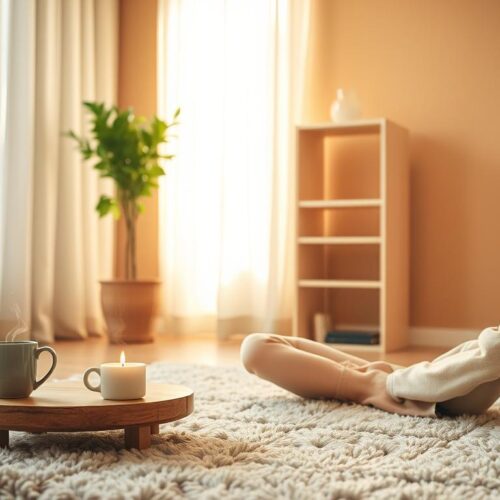Welcome. You can turn your home into a soothing retreat by adding the right indoor plants. Research shows greenery can lower cortisol, steady mood, and improve sleep and air quality.
This short guide will help you choose low‑hassle foliage for each room. You’ll learn which species are best for stress relief, scent, and cleansing the air of common toxins like benzene and formaldehyde.
Expect a concise list of practical choices—fragrant flowers and sculptural leaves—matched to small and large spaces. You’ll also see how simple placement and routine care let nature support your mind and mental health without adding work.
Quick benefits: lower stress, clearer thinking, better sleep, and a brighter mood over time. Read on to match the right plant to the right spot and enjoy a calmer home life.
Why indoor plants help you feel calmer right now
Adding a single green accent to your desk or nightstand can lower stress within minutes. Research shows interacting with a plant reduces cortisol and can lower blood pressure. You see quicker recovery after a tense task when greenery is in view.
The biophilia idea explains why people relax around living things: your brain links natural forms to safety and rest. A brief look at leaves or a short moment of care can give immediate relaxation and cut anxiety.
- Visual contact and gentle touch lower stress levels and ease breathing.
- Air‑purifying species improve indoor air and support steadier breathing.
- Studies report faster stress recovery and better focus when greenery is nearby.
| Benefit | How it works | Quick tip |
|---|---|---|
| Lower cortisol | Visual cues and interaction calm the nervous system | Place one near your workspace |
| Improved breathing | Higher humidity and cleaner air ease respiration | Choose an air‑filtering species |
| Less anxiety | Attention anchors reduce worry and support focus | Touch leaves or water for a mindful pause |
Calm environment plants: what they are and how they support your mental health
Certain house greenery can act like a quiet anchor when your day feels scattered. Therapeutic gardening is linked to better memory, higher self‑confidence, and improved social interaction. You can use simple choices to support your mental health every day.
Good options include fragrant species like Lavender and Jasmine, which ease anxiety through a gentle scent. Easy-care picks such as Snake Plant and ZZ Plant reduce maintenance pressure so the green companion feels helpful, not demanding.
- Soft or symmetrical leaves and steady growth create a soothing visual sense.
- Fragrant varieties gently anchor attention in the present moment.
- Choose a plant that matches your light and care habits to avoid extra stress.
| Trait | Example | How it helps you |
|---|---|---|
| Fragrant | Lavender, Jasmine | Reduces anxiety via scent and focus |
| Low maintenance | Snake Plant, ZZ Plant | Minimizes chores and builds routine wins |
| Tactile appeal | Pothos, Peperomia | Invites mindful touch for quick resets |
The best indoor plants for mental health and stress relief
Some easy-care selections deliver measurable stress relief while improving the air you breathe at home.
Snake Plant: Hardy, architectural leaves and powerful air filtration make it a top choice for low-effort air cleaning. It filters benzene, formaldehyde, and other common toxins.
Peace Lily & Spider Plant: Peace Lily boosts humidity and supports deeper sleep with its flowers. Spider Plant absorbs toxins and produces baby offsets you can share.
Lavender & Jasmine: These fragrant choices reduce anxiety and help with sleep or focused alertness when placed near a chair or bedside.
- Aloe Vera: Purifies air and offers soothing gel for minor skin needs.
- English Ivy: Strong air-filtering ability in bright, indirect light.
- Jade, ZZ, Money Tree: Very low-maintenance picks that ease decision fatigue and add a hopeful vibe to living spaces.
- Boston Fern, Philodendron, Chamomile: Lush foliage or calming flowers that soften visual clutter and support wellbeing.
| Plant | Main benefit | Best spot |
|---|---|---|
| Snake Plant | Air filtration, low care | Desk, bedroom |
| Lavender | Scent for anxiety relief | Near lounge or bedroom |
| Spider Plant | Toxin absorption, easy propagation | Hanging basket, kitchen |
Room-by-room picks: plants that help you relax where you need it most
Match a specific plant to each room to get the most benefit for sleep, focus, and mood.
Bedroom: Choose a Peace Lily to support sleep with cleaner air and added humidity. Add Lavender near your bedside so scent helps cue nighttime relaxation and reduces anxiety.
Living room: Use broad-leaved houseplants like Philodendron, Monstera, or Boston Fern to soften lines and create a tranquil atmosphere where you decompress.
Kitchen: Keep an Aloe Vera on the sill for its soothing gel and a small Rosemary pot for an uplifting, restorative scent when you need a quick reset.
Bathroom: A snake plant tolerates low light and filters toxins, while a Spider Plant thrives in steam and adds motion to the space.
- Home office: Pick low-care options—Jade, ZZ, or Chinese Money Plant—to cut chores and boost focus. Consider Jasmine near seating for gentle fragrance and alert relaxation.
- Entryway and small spaces: English Ivy in indirect light welcomes you, and a Monstera adansonii on a trellis saves floor space.
- Kids’ study and low-light corners: Spider Plant, Pilea, ZZ, or snake plant need little watering and keep the area tidy.
| Room | Top pick | Why it helps |
|---|---|---|
| Bedroom | Peace Lily | Supports sleep via air and humidity |
| Bathroom | Snake plant | Tolerates low light and filters toxins |
| Kitchen | Aloe Vera | Bright spot, useful gel |
Tip: Group by similar watering needs to simplify care and keep a steady atmosphere across your home space.
Evidence-backed benefits: how indoor plants support your mental health
Multiple studies show clear gains when greenery is added to daily spaces. Research from Washington State University found people recovered from computer-task stress more quickly with nearby foliage. The University of Technology Sydney reported a 37% drop in tension and anxiety after adding greenery to offices.
The University of Michigan linked exposure to plants with about a 20% improvement in memory and attention. Norway’s office research noted less stress and fewer sickness reports. The University of Exeter found mental health benefits lasting for years after people moved to greener areas.
- Faster stress recovery: lower cortisol and quicker return to baseline after tasks.
- Better cognition: measurable memory and attention improvement in controlled studies.
- Health gains: reduced blood pressure and fewer reported sick days in greener workplaces.
| Study | Finding | Impact |
|---|---|---|
| Washington State University | Faster post-task recovery | Reduced stress levels |
| University of Technology Sydney | 37% drop in tension | Lower anxiety |
| University of Michigan | ~20% memory improvement | Better attention |
Cleaner air, clearer mind: air-purifying plants that remove indoor toxins
Cleaner indoor air can make it easier to breathe and think clearly. Focus on species that target common household pollutants to lower headaches, fatigue, and stress.

The snake plant is a standout. It filters benzene, formaldehyde, trichloroethylene, xylene, and toluene while thriving in low to medium light. That makes placement flexible for bedrooms or home offices.
Peace Lily removes harmful toxins and raises humidity slightly, which helps dry rooms feel more comfortable. Spider Plant and Boston Fern also pull down common airborne chemicals to leave air feeling fresher.
- Red‑edged Dracaena adds height and helps reduce toxin levels in larger rooms.
- English Ivy performs well in bright, indirect light and targets airborne pollutants on shelves or mantels.
- Combine complementary species to cover a wider range of toxins without complex care.
| Species | Main benefit | Best spot |
|---|---|---|
| Snake Plant | Filters multiple toxins | Bedroom, office |
| Peace Lily | Removes toxins, adds humidity | Living room, bedroom |
| Spider Plant | Effective toxin remover | Kitchen, hanging spots |
As indoor air quality improves, many people report less stuffiness and steadier breathing. Place air‑purifying species where you work, sleep, or relax most so benefits concentrate where you need them and support better overall health.
How to choose plants for your home environment
Choose plants that match your light and lifestyle so they thrive where you live.
Start by noting how much natural light each room gets. A low-light corner needs a ZZ or snake plant, while a bright sill suits Lavender or Jasmine.
- Start with light: match the plant to the room’s sun exposure so it grows well in your space.
- Consider care fit: pick low-maintenance species if you often forget watering.
- Align benefits with goals: choose air‑purifying or fragrant types to help improve sleep or focus.
- Balance form and beauty: select leaves and flowers that complement your decor instead of clashing with it.
- Think scale: use tall, narrow forms in tight spots and fuller plants where you want softer sightlines.
| Plant | Main benefit | Best light |
|---|---|---|
| Snake Plant | Robust air filter, low care | Low–medium |
| ZZ Plant | Tolerates neglect, sleek leaves | Low–bright indirect |
| Peace Lily | Raises humidity, flowers | Medium–bright indirect |
Choose one signature plant per room to keep your home intentional and clutter-free. Keep a short care note for each plant so routine tasks feel simple and rewarding.
Simple care routines that reduce stress—not add to it
A few straightforward habits let you enjoy growth without turning care into extra work. Batch your watering once a week and group similar houseplants so you spend less time guessing and more time enjoying results.
Use a moisture meter or the finger test to avoid overwatering. Most low‑stress choices prefer drying slightly between drinks. Place a weekly reminder on your calendar so care becomes a short, predictable task.
- Pick forgiving species: Snake Plant and ZZ Plant need minimal watering and tolerate low light, so they rebound if you miss a session.
- Watch cues: A Peace Lily droops slightly when thirsty—use that signal as a simple cue to water.
- Propagate: Spider Plant cuttings are easy to root and share, turning care into a pleasant hobby.
| Action | Frequency | Benefit |
|---|---|---|
| Grouped watering | Weekly | Saves time and reduces worry |
| Trim yellow leaves | As needed | Keeps space tidy and visually restful |
| Refresh light placement | Seasonally (each few years review) | Helps improve growth with minimal effort |
Keep a small caddy with a can, snips, and cloth so tasks are fast. These tiny rituals take little time but lower daily stress and support your home and personal health.
Relaxing scents and flowers that boost your mood
Scented blooms can be a subtle cue that shifts your mood and lowers daily tension.
Lavender’s fragrance is backed by research: it helps reduce anxiety and can improve sleep when placed where you begin winding down each night.

- Lavender: gentle scent for lower anxiety and deeper sleep; keep near your bedside or lounge chair.
- Jasmine: sweet fragrance that soothes while keeping your mind lightly alert—great by reading spots.
- Chamomile: calming blooms can be dried and brewed into tea for evening relaxation routines.
- Peace Lily: elegant flowers add visual serenity and support restful areas like bedrooms or quiet nooks.
- Gerbera & Chrysanthemum: bright color and mild scent lift mood and help improve air quality in common rooms.
Rotate floral accents seasonally, keep scented varieties in bright, indirect light, and avoid strong competing candles so natural fragrance shines. If you’re sensitive to smell, use flowers mainly for visual beauty and pair them with unscented green companions nearby. Small, consistent scent cues can help regulate stress levels during your daily transitions.
| Flower | Main benefit | Best spot |
|---|---|---|
| Lavender | Reduces anxiety; improves sleep | Bedside, lounge |
| Jasmine | Soothes and sharpens alertness | Reading chair, home office |
| Chamomile | Evening relaxation; brewable tea | Nightstand, kitchen |
From nature to nurturing: how tending plants supports daily well-being
Tending a small indoor collection gives you a steady, gentle ritual that anchors your day. Brief daily check-ins create a mindful pause and bring quick relief from nonstop screens and notifications.
Repeating simple care steps—watering, wiping leaves, or deadheading flowers—builds purpose. These tiny wins boost your energy and help your mind feel steadier as the week unfolds.
Horticultural therapy shows how routine tending can support memory, self-confidence, and social skills. People report lower stress and improved focus after short nature‑connected activities, even when those moments happen indoors.
- Short check-ins act as micro-breaks that offer relief and reset attention.
- Tactile tasks anchor your mind in the present and reinforce memory.
- Sharing cuttings or photos adds social reward and expands meaning.
| Ritual | Benefit | Time |
|---|---|---|
| Soil check | Reduces worry, supports memory | 1–2 minutes |
| Leaf wipe | Improves mood, clearer mind | 2–3 minutes |
| Deadhead flowers | Sense of progress, lower stress | 2–5 minutes |
Over time these small acts deliver real health benefits. Use a playlist or morning light as a cue so the ritual becomes a restorative habit you enjoy.
Conclusion
A single well‑chosen plant often delivers the quickest, most noticeable benefits in a busy home. Add one to the space where you spend most time and you can track small improvements in mood, focus, and energy over weeks.
Choose a low‑maintenance option first, then add an air‑purifying species to widen the health benefits. Studies show indoor plants help lower stress and reduce anxiety, and they support lasting mental health gains when used consistently.
Keep care simple and routine so the greenery supports you rather than becoming another chore. Expect gradual improvement in sleep, attention, and overall levels of wellbeing as you build a thoughtful, stress‑reducing atmosphere.




